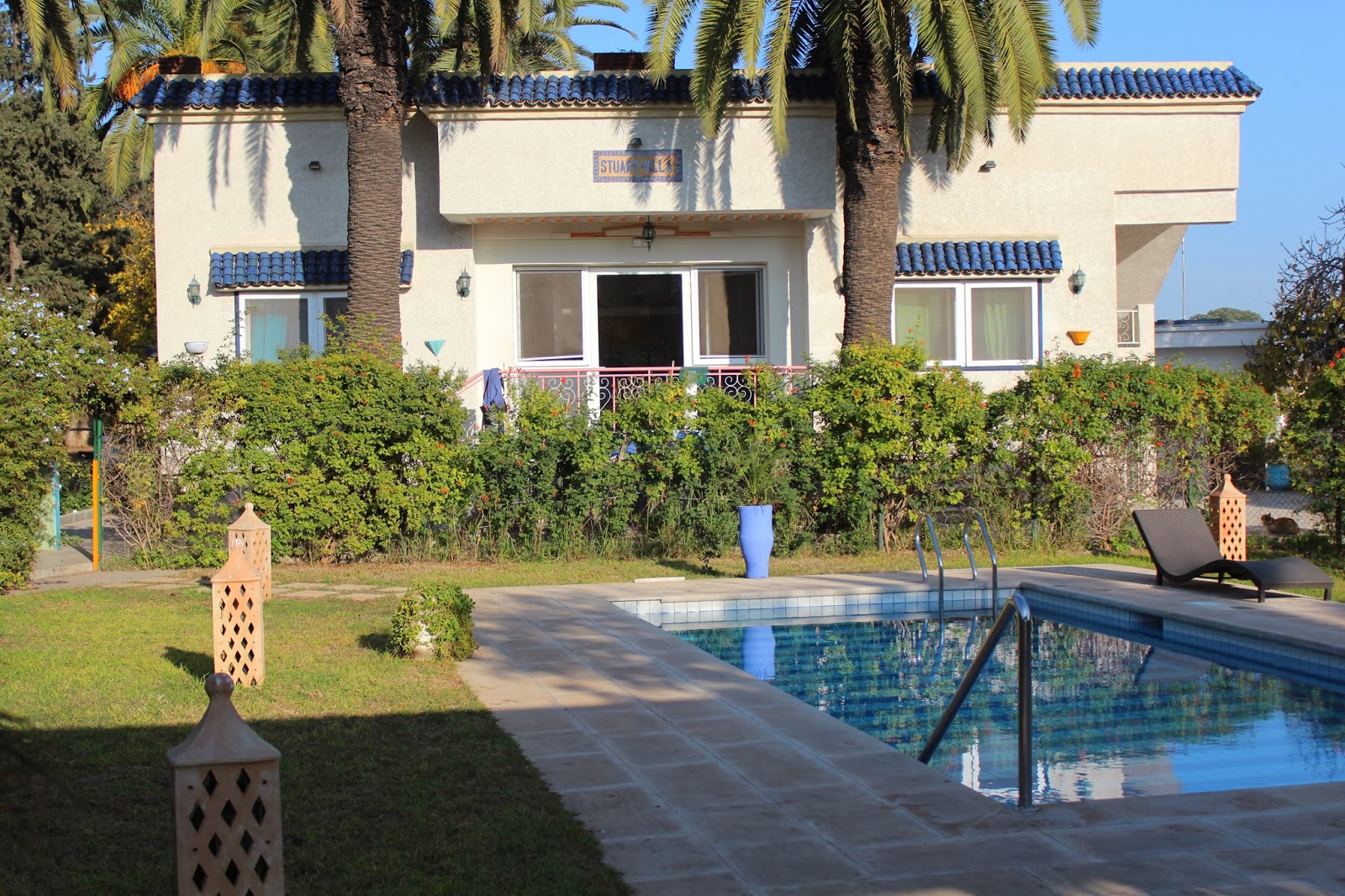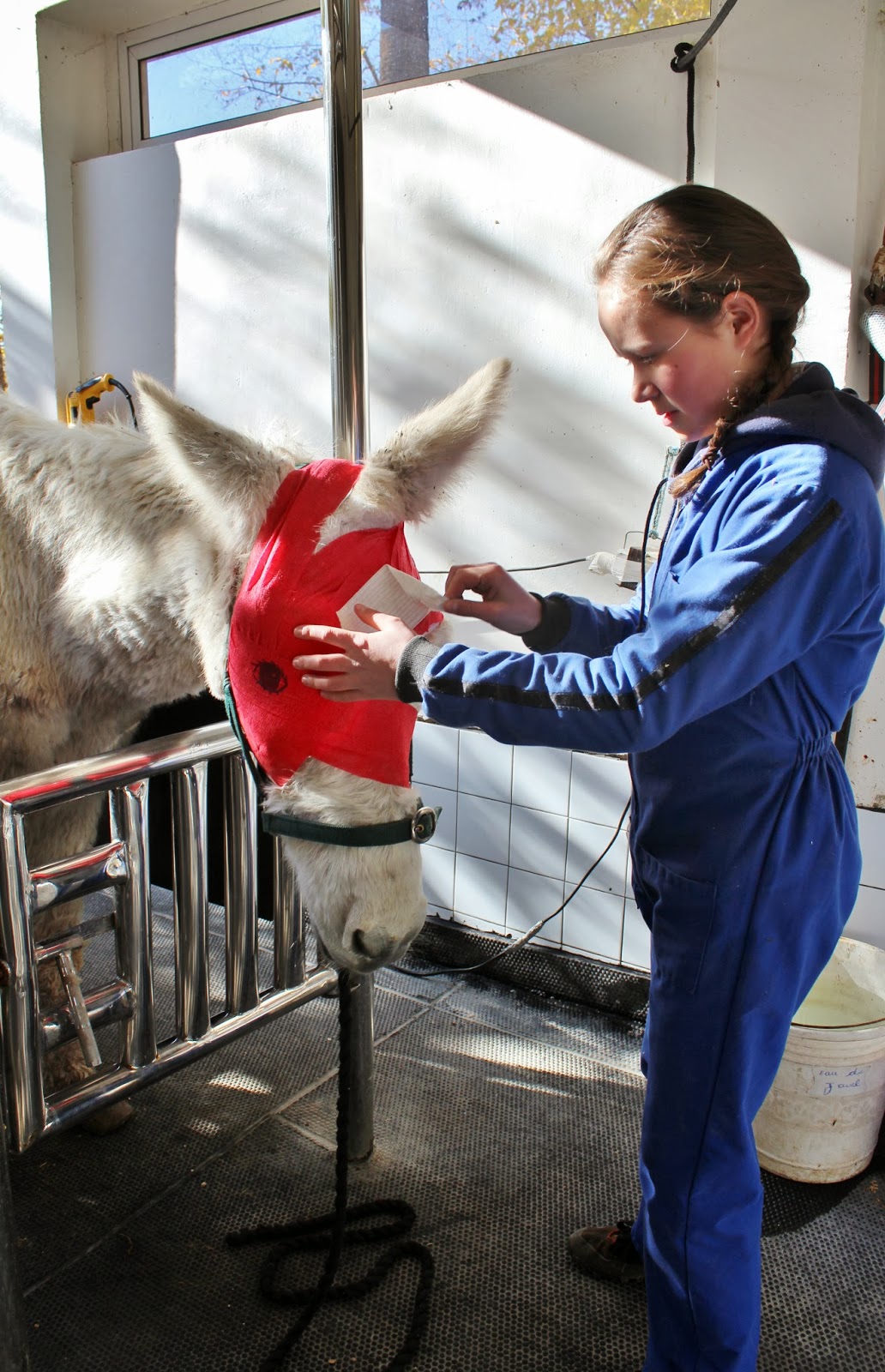 |
| Me with Chester, my favorite patient! |
Sorry for the year-long delay in posts... The rest of my clinical when from busy to crazy, and unfortunately I fell behind with all of my blog posts. Because there is a lot that I still wanted to share from these experiences, I'm updating now... better very late than never!
 |
| Demonstrating equine dental care in one of our few free moments! |
For my last rotation of 2012, I headed all the way to Fez, Morocco for an equine rotation at the American Fondouk, a non-profit organization that provides free medical care to working horses, donkeys, and mules in Morocco. I can't say enough good things about the American Fondouk. They run a fantastic non-profit clinic and provide care ranging from dental cleanings to proper shoeing and from routine physicals to months of in-clinic medicine or surgical care. There are no appointments, yet despite the chaos, everything gets done.
 |
| One of the working donkeys in the medina- these little guys are some of the hardest workers in Morocco! For their owners, a healthy donkey is the difference between subsistence living and devastation. |
 |
| A donkey navigating the medina streets; it's too narrow and hilly in the medina for any motorized vehicles, so donkeys have to do all the dirty work. This guy was bringing building materials to a construction site. |
The Fondouk is a walled complex with a large gate at front for patients to enter. Inside is the director's home, a student dormitory, and the hospital. There are a number of stalls for inpatient horses and a few paddocks; because there were often more patients than stalls, the animals were often doubled (and sometimes tripled) up in the stalls. For a few nights, we had an animal or two tied to posts in the courtyard! There was also a small laboratory, an x-ray room, and an a stanchion that could be used for treatments and dentals. We even had an ambulance, just in case animals needed to transported offsite! There is also an area for the farrier, who shoes hundreds of animals a year.
 |
| Welcome to the American Fondouk! The front gate is open for a few hours every day for new patients. |
 |
| The student dormitory |
 |
| One of the stalls; one horse or two donkeys would easily make this their home for a few days! |
 |
| Placing new shoes |
 |
| The treatment area and standing stocks |
 |
| This little stall became our isolation ward when colitis patients were on the property. |
 |
| Our ambulance |
 |
| One of the grazing areas/fields in the Fondouk. |
 |
| At one point, we ran out of room for Chester, and he spent a few nights tied to a tree instead of in a stall. He didn't mind though, as long as the grain and hay kept coming! |
Weekdays at the Fondouk start with morning treatments being done by the veterinary students and visiting veterinarians. Each animal in the facility gets an exam and medication by the student working with them. Some mornings, we each had as many as 5-6 patients to TPR, give medications, and treat, which all needs to be done before morning rounds. Morning rounds usually take around an hour or two as the students and veterinarians work their way through the facility getting an update on each animal on the property. These rounds are held in a combination of English, French, and Arabic, depending on who is in attendance.
After rounds, the doors to the Fondouk open, and for the next few hours, anyone can bring their working equid in for treatment. These animals get walked in (or driven in), and some travel hours to get their animal seen. On some mornings, 20-30 animals will be standing out in the courtyard for treatment! We work through the cases as they come in, with a student doing a preliminary exam and taking a history (although most clients only speak Arabic) then presenting the case to one of the clinicians. At that point, the animal is either treated and sent home, or admitted to the hospital for treatment.


Once all the animals have been looked at and the doors are closed for the afternoon, we take the time to do any treatments needed on the in-patient animals. Dental procedures, surgeries, bandage changes, etc, all happen during the afternoon. In the evenings, the students do any evening treatments before heading back to our rooms. Unlike most hospitals, there is no nursing staff to perform overnight treatments for the animals, so students are responsible for any overnight treatments on their patients. Some nights, animals need checks every 2 hours, so by the end of the week, everyone is exhausted!
On weekends, the doors never open to new patients, giving us a chance to take a break, do treatments, and catch up on sleep!
During my two weeks at the American Fondouk, I learned so much about
equine medicine and animal use in Morocco and made amazing friends from
the US and Morocco in the process! I'll share a few of these stories
and pictures below. None of the animals at the Fondouk had names, but we named some of our long term guests once we got tired of referring to them as "the colitis mare", "the rectal prolapse donkey", etc.
This mare had been in the hospital for a few weeks when I arrived, and I picked her up as one of my patients. She had arrived with her foal. She was being treated for a infected wound in her hind leg with a possible bone sequestrum in her femur. Every other day we cleaned and packed her wound until our surgeon returned and a decision could be made about when and how to approach surgery for the sequestrum.
This is Zora who came to us with gaping wounds on her jaw. Every 2-3 days, her bandages were changed and the wound was cleaned as we allowed it to heal by second intention. After a few days, we named her and started decorating her bandages.
This is Hugo, who was named by the daughter of a visiting veterinarian. Hugo was being treated for facial trauma; his right eye was swollen shut when he came to us, and it was unclear if he had any vision remaining in his eye. He too was being treated with regular bandage changes and eye treatments.



This donkey came in my last day at the American Fondouk. He was a working donkey from the medina who had been very sick for days. His owner's job depending on the donkey, so when the donkey was unable to work, so was his owner. After a few days of pleading with his donkey to get up so he could work (his family had gone without food for a few days), he managed to arrange transport to the Fondouk for treatment. When they arrive, the donkey could barely stand. Despite our pleading, he wasn't willing to leave the donkey for treatment, since again, he needed the donkey to work and had already been out of work for a few days. We were only able to convince him to allow the donkey to stay when we provided a replacement donkey to take his place for a few days.


